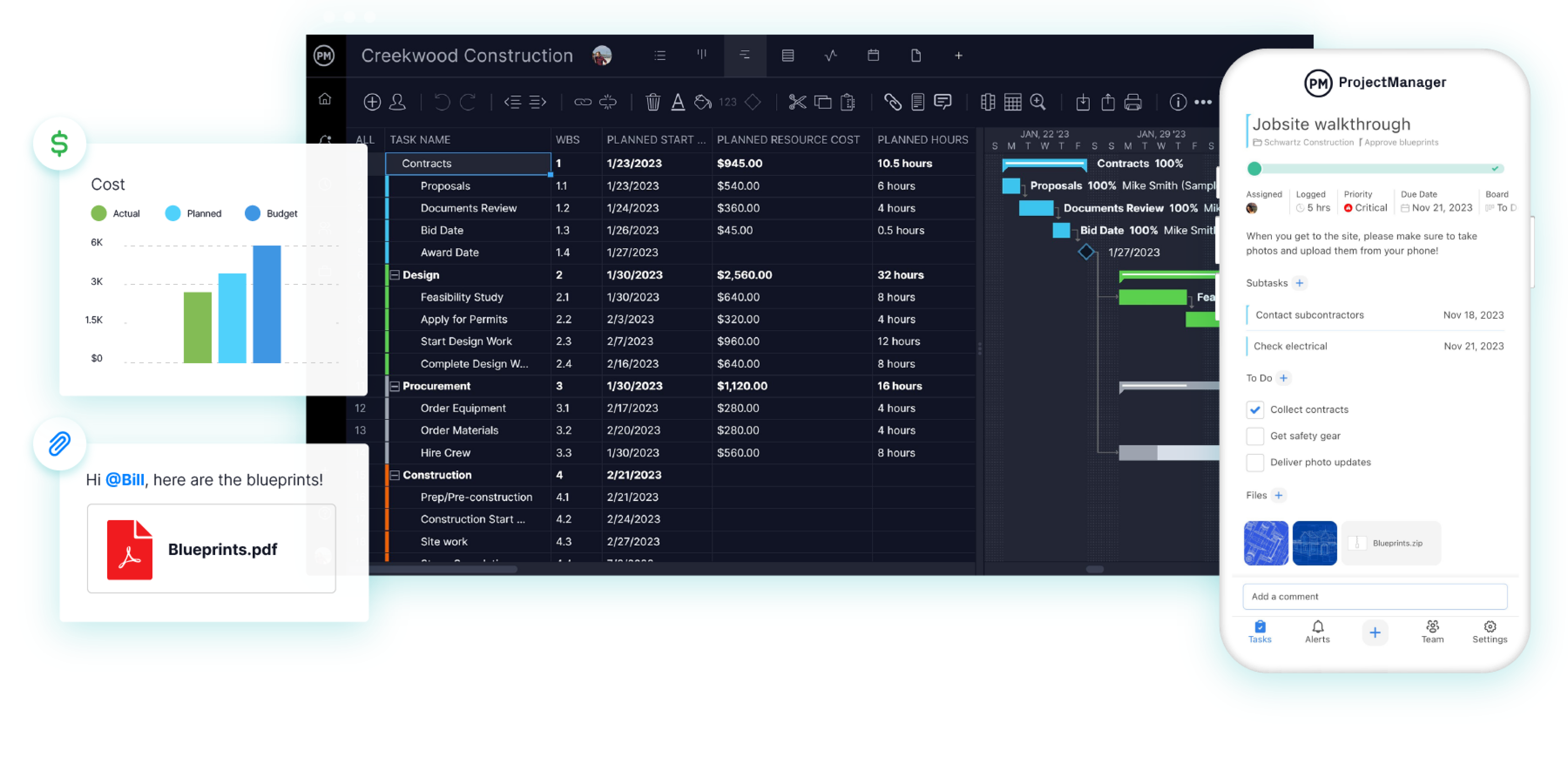Customized Building And Construction Administration Software Application: Optimizing Resource Allotment and Budgeting Techniques
These sophisticated devices use a nuanced method to maximizing resource appropriation and budgeting techniques, crucial elements for effective project execution. By diving into the ins and outs of just how such software application can boost resource allowance approaches and refine budget plan optimization strategies, a clear pathway toward enhanced project effectiveness emerges.
Advantages of Tailored Software Program Solutions
Tailored software application remedies offer a myriad of advantages to building monitoring companies seeking to improve effectiveness and streamline operations. One crucial advantage is the modification of features to line up with the certain demands of the building and construction industry (construction software). By customizing software remedies to address job management, scheduling, budgeting, and resource allocation, firms can optimize their workflows and achieve greater productivity. Additionally, customized software program permits for smooth assimilation with existing systems, lowering the demand for hand-operated information entrance and lessening errors.
An additional benefit of tailored software application services is the ability to give real-time understandings and analytics. Building management companies can take advantage of data-driven decision-making to check task development, recognize bottlenecks, and make changes without delay. This positive approach boosts job outcomes and aids firms remain on track with timelines and budget plans.

Boosted Resource Appropriation Methods
Applying efficient resource appropriation approaches is important for building and construction administration companies to maximize job end results and take full advantage of performance. Enhanced resource allowance approaches involve purposefully assigning workers, tools, and products to specific tasks to make sure optimum utilization of resources. One crucial facet of boosted source allotment is the capacity to properly anticipate project requirements and assign resources appropriately. By leveraging building and construction monitoring software that offers real-time tracking and reporting features, firms can dynamically change appropriations as job requires progress, bring about boosted performance and cost-effectiveness.
In addition, enhanced resource allocation approaches make it possible for building firms to recognize and address potential traffic jams or resource constraints proactively. By performing routine assessments of source usage and efficiency metrics, supervisors can make data-driven decisions to rearrange resources effectively and protect against hold-ups. This proactive strategy not only enhances job timelines but additionally reduces the threat of budget plan overruns due to ineffective source allowance.
Spending Plan Optimization Methods
To achieve ideal financial effectiveness in construction jobs, effective budget plan optimization strategies play an essential duty in making sure price control and project success. One vital technique is the facility of a detailed job spending plan that assigns sources based on concern and essential needs. By plainly specifying the scope of work, setting practical cost quotes, and continually monitoring costs, building and construction supervisors can identify prospective expense overruns beforehand and take corrective actions. In addition, applying value design methods can assist improve job expenses without endangering quality. This includes examining you can find out more each task component to identify chances for expense savings while preserving efficiency criteria. Leveraging historical data and industry standards makes click to read more it possible for building and construction managers to make enlightened decisions concerning budget allotments and determine areas where spending can be optimized. By incorporating these spending plan optimization strategies into building and construction monitoring software program, task stakeholders can improve monetary planning, source appropriation, and general budget plan management to drive task success and productivity.

Influence On Task Effectiveness
Enhancing building and construction management software can substantially boost task efficiency by improving communication, enhancing cooperation, and promoting data-driven decision-making. Additionally, construction management software application can provide valuable understandings via information analytics, permitting task supervisors to make enlightened choices promptly and accurately.
Moreover, the automation of routine tasks such as scheduling, budget monitoring, and source allocation can maximize valuable time for project groups to concentrate on critical tasks, inevitably quickening job shipment. The capability to keep track of project progress in real-time and recognize possible traffic jams allows positive problem-solving, preventing issues from rising and creating delays. In general, the impact of customized building administration software on task effectiveness is indisputable, offering a competitive advantage by maximizing process and optimizing efficiency.
Future Trends in Construction Software Program
As the building industry proceeds to develop, advancements in innovation are shaping the future landscape of building and construction software application solutions. One substantial pattern imminent is the boosting integration of expert system (AI) and equipment discovering capabilities in building and construction software. These modern technologies have the potential to reinvent how building projects are handled by making it possible for predictive analytics, automated decision-making procedures, and improved job understandings.
One more future fad in construction software program is the expanding focus on cloud-based solutions. Cloud technology provides raised flexibility, scalability, and ease of access for building and construction groups, permitting for real-time collaboration and information sharing across task stakeholders. This shift in the direction of cloud-based software application is anticipated to boost project efficiency, enhance interaction, and boost overall project results.
In addition, the surge of Building Information Modeling (BIM) is expected to continue forming the construction software application landscape. BIM software application assists in 3D modeling, visualization, and information monitoring, leading to enhanced project coordination, decreased errors, and enhanced job results. Accepting these future patterns in building and construction software program will be critical for companies looking to remain affordable and drive technology in the sector.
Verdict
In verdict, tailored construction management software program uses many benefits such as boosted resource allocation techniques and budget plan optimization methods. This software application has a significant effect on project performance by simplifying processes and improving total performance (construction software). As innovation continues to breakthrough, future fads in building and construction software application are anticipated to additional maximize resource allocation and budgeting approaches their explanation for building tasks